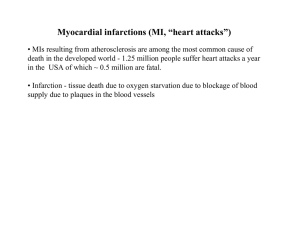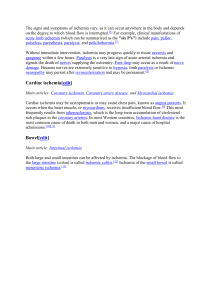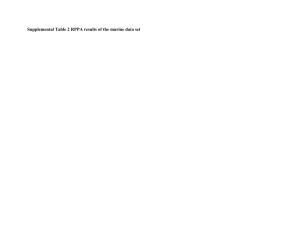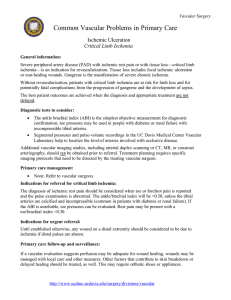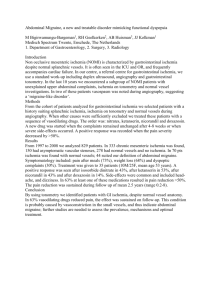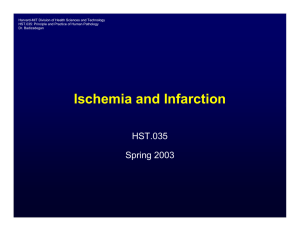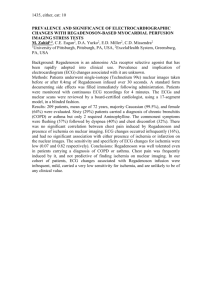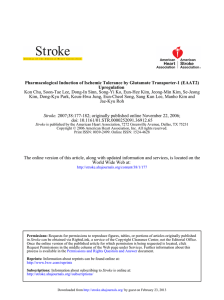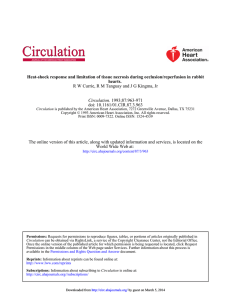cell injury & response - 4
advertisement
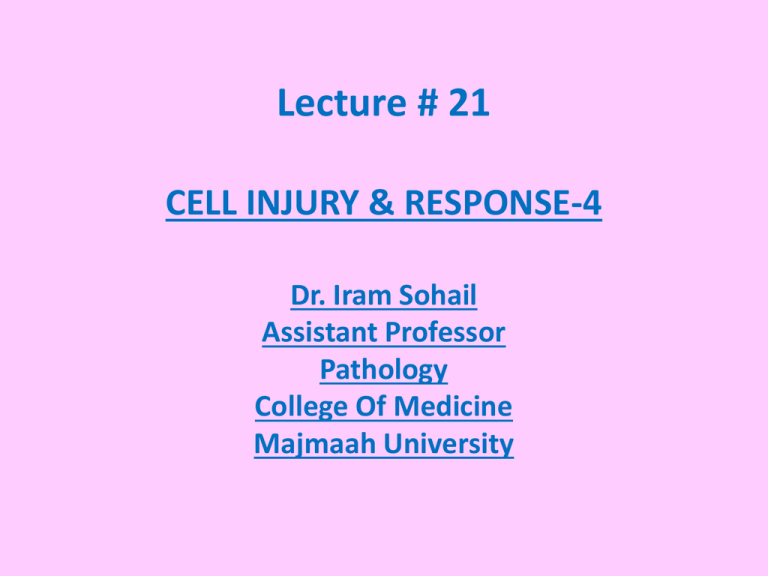
Lecture # 21 CELL INJURY & RESPONSE-4 Dr. Iram Sohail Assistant Professor Pathology College Of Medicine Majmaah University OBJECTIVES • Discuss ischemic and hypoxic injury • Discuss ischemic - reperfusion injury • Discuss chemical injury 1. ISCHEMIA & HYPOXIC INJURY • Ischemia (decrease blood flow) is the most common cause of cell injury. • The main abnormality in hypoxia is the reduced generation of ATPs because of decrease supply of oxygen. • Loss of ATPs results in failure of energy dependent systems of cells like, 1. Failure of ion pump • Leads to swelling of cell • Calcium influx 2. Depletion of glycogen stores 3. Accumulation of lactic acid 4. Decrease protein synthesis Also • Bleb formation • Loss of microvilli • Swelling of cells & its organelles (mitochondria, ER) • If oxygen is restored then all of the above mentioned abnormalities will be reversed (reversible injury) • If the ischemia persists, irreversible injury & necrosis (death) will occur. • The main features of irreversible injury are – Severe damage to cell membrane – Extensive mitochondrial damage – Swelling of lysosomes • Death is mainly by necrosis. • Finally the dead cell will be degraded and phagocytosed by WBCs. 2. ISCHEMIA – REPERFUSION INJURY • If the injury is reversible, restoration of blood flow can result in recovery. But, • Sometimes restoration of blood flow to the ischemic tissue leads to further damage to cell. • This is called ischemic – reperfusion injury. • It mostly occurs in heart & brain. Mechanism • Restoration of blood ----- influx of ROS (from parenchymal cells, endothelial cells & leukocytes) ----- increased consumption of antioxidants by ROS ----- increased free radicle accumulation ------ damage to cell. Also, • Ischemia is associated with inflammation ----increased numbers of WBCs (leukocytes) and plasma protein are present at site of ischemia – reperfusion ------ will cause further damage. Also • Activation of complement system also causes ischemia – reperfusion injury. 3. CHEMICAL (TOXIC) INJURY • Chemicals cause injury by one of 2 mechanisms. 1. Direct 2. Indirect 1. Some chemicals are active and directly binds with cell organelles. Examples • In mercuric chloride poisoning, mercury directly binds with cell membrane and causes its damage. • Many anti-neoplastic (anti-cancer) drugs directly damage the cells. 2. Many other chemicals are initially inactive, so first converted to reactive (active) toxic metabolite which then act on target cell. • This conversion occurs in liver by help of an enzyme called P-450. • The most important mechanism in this type of injury is free radicle injury. Example • CCL4 (carbon tetra chloride) is converted to toxic free radicle CCL3 in liver ----- CCL3 causes rapid damage to cell membrane, mitochondria and ER ------ cell swelling & calcium influx ----death of the cell.
